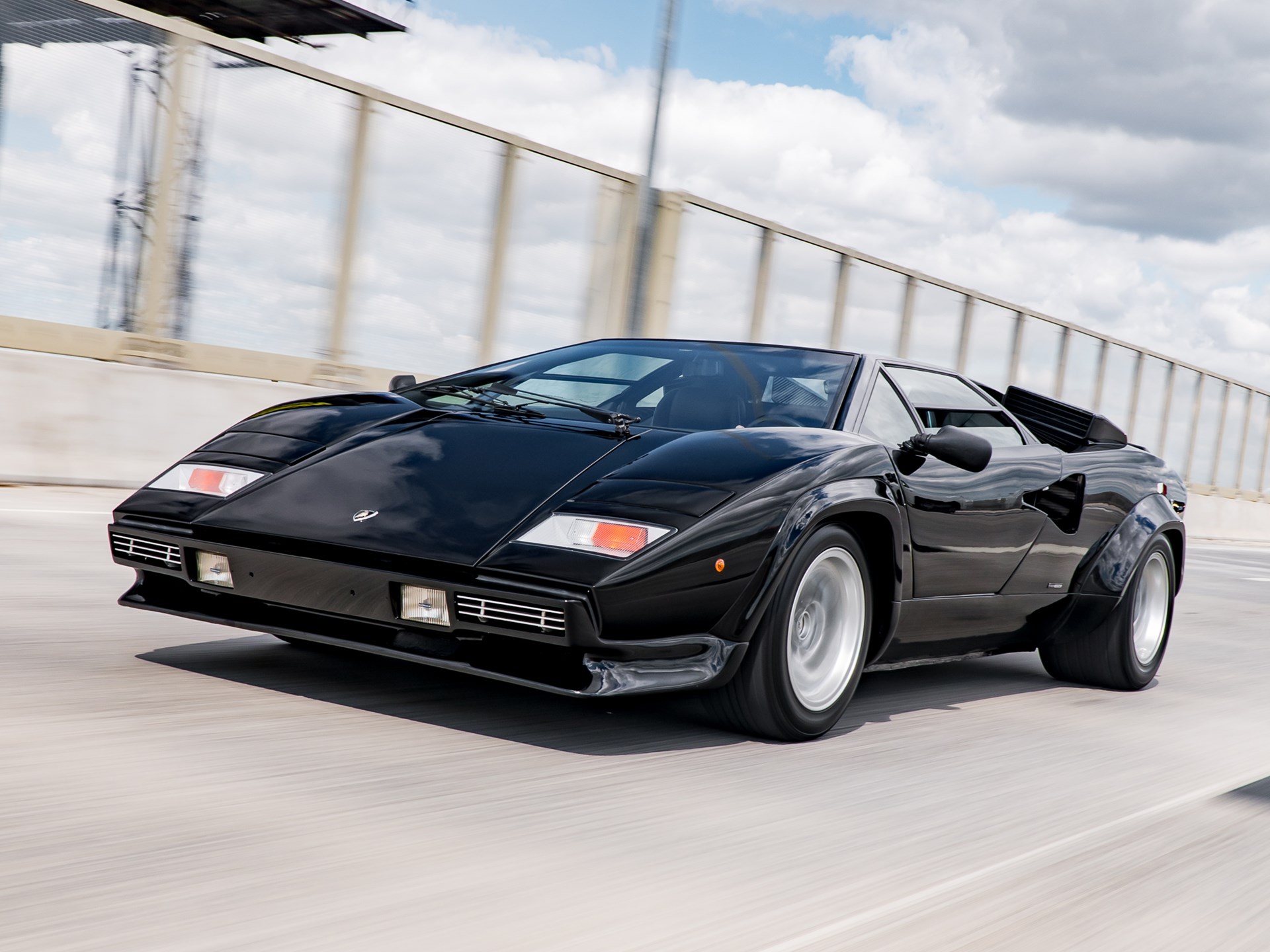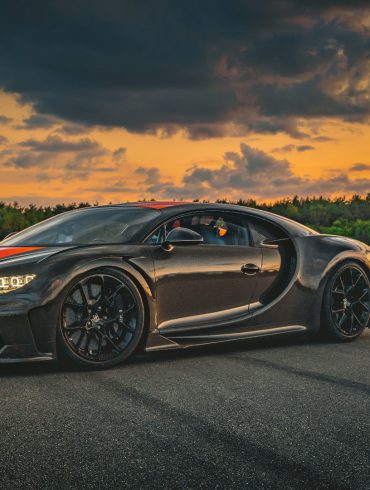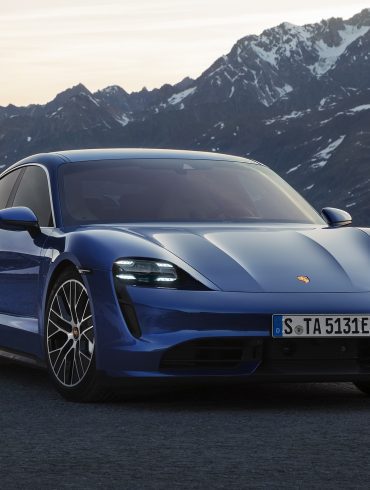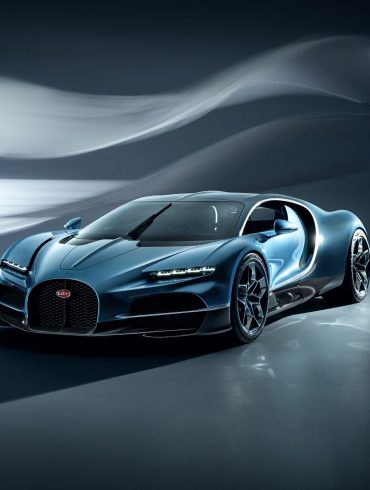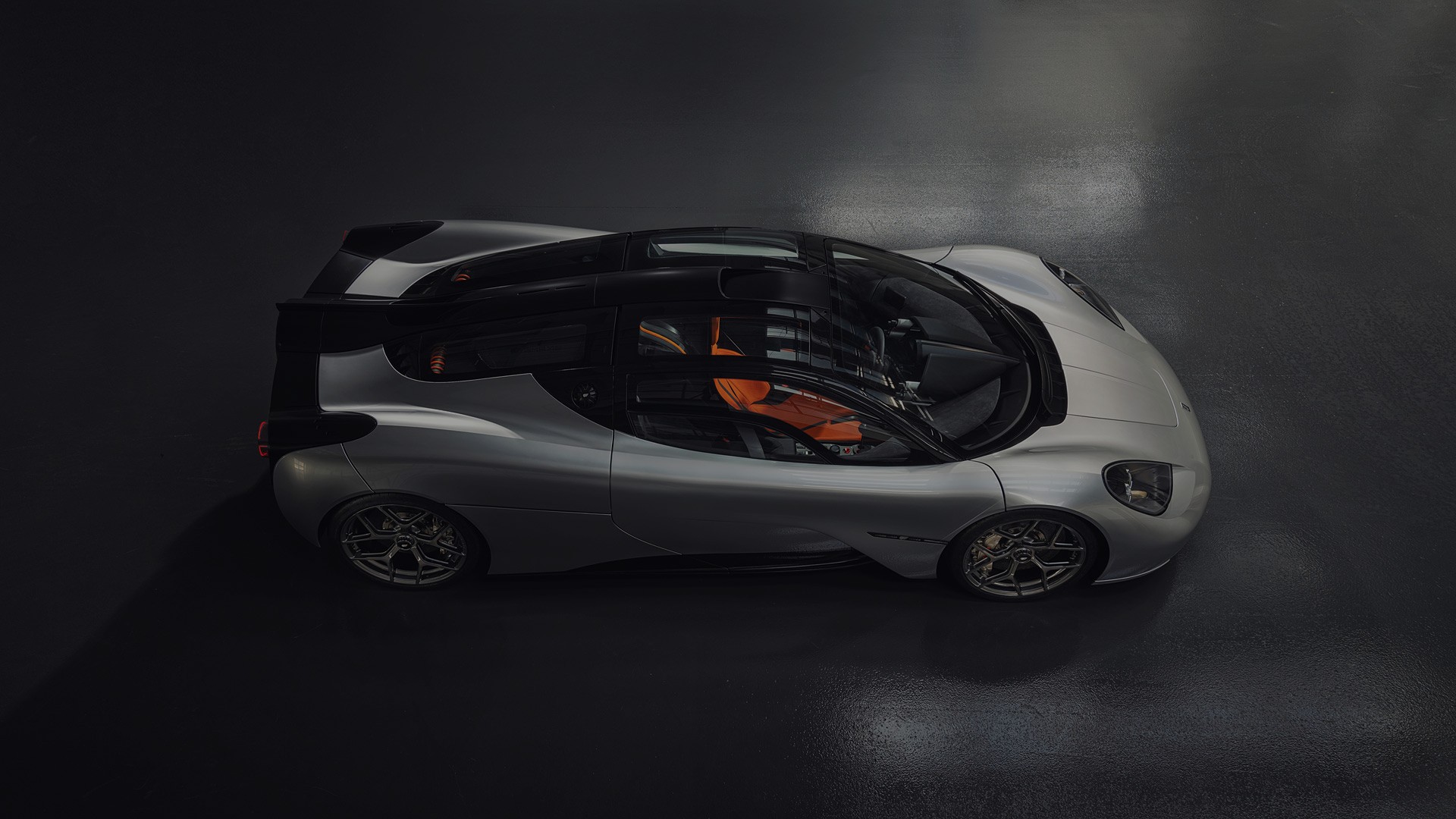1980s 0-60 & Quarter Mile Times
1980s Automotive Acceleration & Performance Data
Welcome to the ultimate guide to 0-60 mph and quarter mile times for 1980s cars! This page is your go-to resource for the most accurate, comprehensive, and easily accessible performance statistics of classic vehicles from the 1980s. Whether you're a supercar fan, or simply fascinated by this awesome era, our meticulously curated database offers unparalleled insights into the acceleration and speed of these timeless machines. Explore the remarkable performance of 1980s cars.
1980s Acceleration (0-60 mph & Quarter Mile Times)
1980s 0-60 mph and quarter-mile acceleration times. Narrow down your search via the filters.
You are trying to load a table of an unknown type. Probably you did not activate the addon which is required to use this table type.
The Fifteen Fastest Cars of the 1980s
The Quickest Cars of the 1980s Ranked
The 1980s were a decade of revitalization and innovation in the automotive industry, marked by significant advancements in engine technology, a resurgence in performance, and the rise of Japanese manufacturers as major players on the global stage.
In the United States, Chevrolet and Ford made substantial strides in improving both performance and efficiency. The introduction of electronic fuel injection systems and turbocharging became more common, enhancing power output while meeting stricter emissions regulations. Chevrolet's Corvette saw a renaissance with the introduction of the C4 model in 1984, which featured advanced aerodynamics, digital instrumentation, and improved handling. Ford also embraced the era's technological advancements, notably with the Mustang's evolution, including the high-performance Mustang GT and the turbocharged SVO model.
European manufacturers continued to push the boundaries of performance and luxury. Ferrari introduced some of its most iconic models during this decade, including the Ferrari 288 GTO and the legendary F40, which became symbols of high-performance engineering with their powerful turbocharged V8 engines. Aston Martin, although facing financial challenges, produced the V8 Vantage Zagato, combining bespoke luxury with significant performance improvements. Jaguar, under new ownership and rejuvenation efforts, launched the XJ220 concept in the late 1980s, which would become one of the fastest cars of its time with its twin-turbocharged V6 engine.
The 1980s also witnessed the meteoric rise of Japanese car manufacturers, who gained global acclaim for their reliability, innovation, and performance. Brands like Toyota, Honda, and Nissan became household names, thanks to their dedication to quality and technological advancement. The Toyota Supra and the Nissan 300ZX emerged as formidable sports cars, combining powerful turbocharged engines with sleek designs. Honda introduced the Acura brand in the U.S., launching the Acura NSX in 1989, which revolutionized the supercar segment with its mid-engine layout, aluminum construction, and daily drivability. Japanese manufacturers also pioneered advancements in efficiency and practicality. Toyota's introduction of the Corolla and Camry models solidified its reputation for building reliable, fuel-efficient cars. Meanwhile, Honda's Civic and Accord became synonymous with dependability and innovation, featuring advancements like multi-valve engines and improved aerodynamics.
The 1980s were also notable for the increasing use of computer-aided design and manufacturing processes, which allowed for greater precision and innovation in vehicle development. This era saw significant improvements in safety, with the introduction of features like anti-lock braking systems (ABS) and more effective crumple zones.
Overall, the 1980s were a transformative period for the automotive industry. American brands like Chevrolet and Ford regained their performance edge through technological advancements. European manufacturers like Ferrari, Aston Martin, and Jaguar continued to lead in luxury and performance. Meanwhile, Japanese brands like Toyota, Honda, and Nissan established themselves as major global competitors, known for their innovation, reliability, and performance. This decade set the stage for further advancements in automotive technology and a more competitive global market.
1. 1987 Ferrari F40
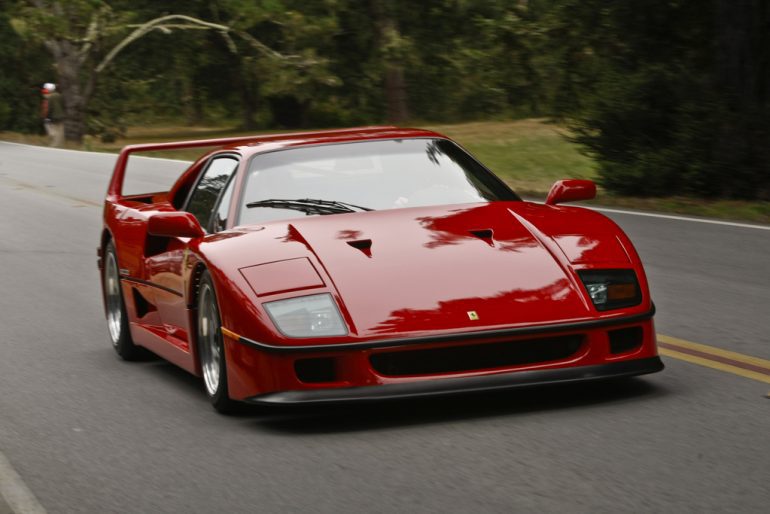
0 - 60: 3.7 seconds / Quarter Mile: 11.7 seconds
Summary
The 1987 Ferrari F40 is an iconic supercar that solidified Ferrari's dominance in the automotive world during the late 20th century. Designed to commemorate the brand's 40th anniversary, the F40 was a raw and uncompromising machine that prioritized performance and driving thrills above all else.
Underneath its striking Pininfarina-designed bodywork, which featured aggressive lines and a massive rear wing, the F40 housed a twin-turbocharged 2.9-liter V8 engine. This powerhouse generated 471 horsepower and 426 lb-ft of torque, propelling the lightweight car from 0 to 60 mph in just 3.7 seconds. Its top speed, officially recorded at 201 mph, made it the fastest production car in the world at the time of its release.
However, the F40's performance wasn't just about raw power. It was a well-balanced machine designed for optimal performance on the track. Its tubular steel chassis, lightweight composite body panels, and race-inspired suspension all contributed to its exceptional handling and agility. The F40's brakes, while not as advanced as today's standards, were still capable of bringing the car to a stop with impressive force.
Inside the cabin, the F40 was stripped down to the bare essentials, with a focus on functionality and weight reduction. There were no power windows, air conditioning, or sound system, as these amenities were considered unnecessary weight for a performance car. The F40's spartan interior and raw driving experience were a testament to its racing heritage and its focus on pure driving pleasure.
2. 1987 Porsche 959 Sport
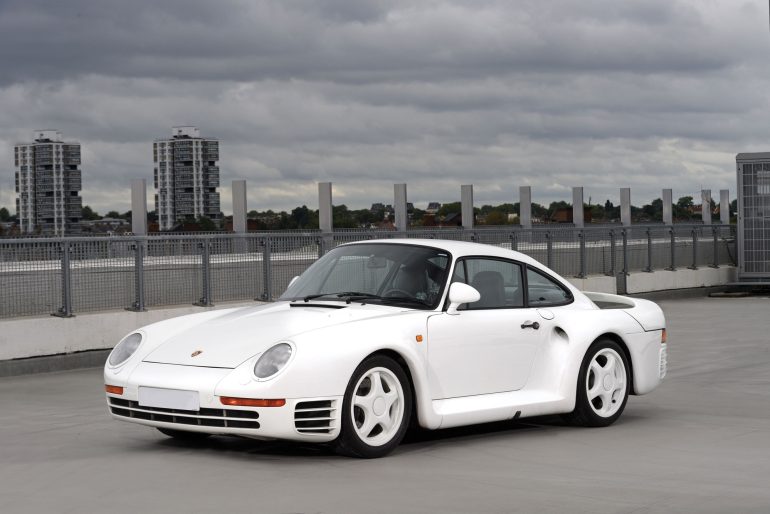
0 - 60: 3.7 seconds / Quarter Mile: 11.9 seconds
Summary
The 1987 Porsche 959 Sport is a rare and legendary supercar that represented the pinnacle of automotive technology in the 1980s. It was a limited-edition variant of the already impressive 959, designed to maximize performance and deliver an even more exhilarating driving experience.
Underneath its iconic bodywork, the 959 Sport boasted a twin-turbocharged 2.85-liter flat-six engine, which in the Sport trim was tweaked for additional power. This powerhouse produced 515 horsepower and 413 lb-ft of torque, representing a significant increase over the standard 959's 450 horsepower. The Sport could sprint from 0 to 60 mph in an astonishing 3.7 seconds, a remarkable feat for its time, and reach a top speed of 197 mph.
The 959 Sport's performance wasn't just about raw power; it was a showcase of cutting-edge technology and engineering. It featured a sophisticated all-wheel-drive system, adjustable ride height, and a revolutionary tire pressure monitoring system. These innovations, combined with its lightweight construction and aerodynamic design, made it a formidable machine on both the road and the track.
Inside, the 959 Sport offered a luxurious and driver-focused cabin with comfortable sport seats, a state-of-the-art sound system, and a range of convenience features. While its price tag was astronomical at the time, the 959 Sport's rarity, performance, and technological advancements made it a dream car for many enthusiasts and a true icon in automotive history.
3. 1988 Porsche 911 Turbo 3.3
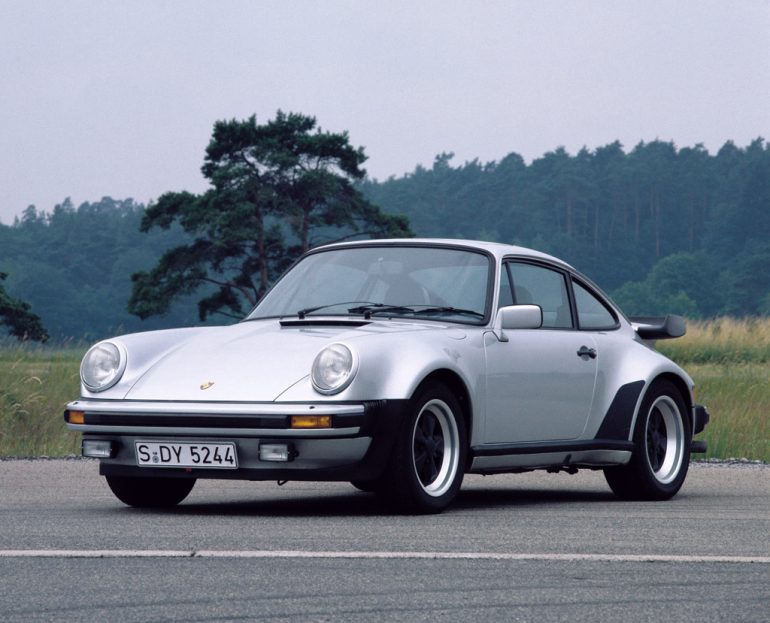
0 - 60: 4.6 seconds / Quarter Mile: N/A seconds
Summary
The 1988 Porsche 911 Turbo 3.3 was a high-performance machine that pushed the boundaries of automotive technology for its time. With its iconic "whale tail" spoiler and wide body stance, it was instantly recognizable and exuded a powerful presence.
Underneath its sleek exterior lay a potent 3.3-liter flat-six engine, equipped with a single turbocharger and an intercooler. This powerplant generated an impressive 300 horsepower and 304 lb-ft of torque. This translated to exhilarating acceleration, propelling the 911 Turbo from 0 to 60 mph in a mere 4.6 seconds. With a top speed of 160 mph, the 911 Turbo 3.3 was a force to be reckoned with on the open road.
However, the 911 Turbo 3.3 wasn't just about raw power. It was also known for its advanced technology and innovative features, such as its all-wheel drive system, anti-lock brakes, and adjustable suspension. These features, combined with its rear-engine layout and precise handling, made the 911 Turbo 3.3 a thrilling and challenging car to drive. It was a car tha
4. 1986 Aston Martin V8 Vantage Zagato
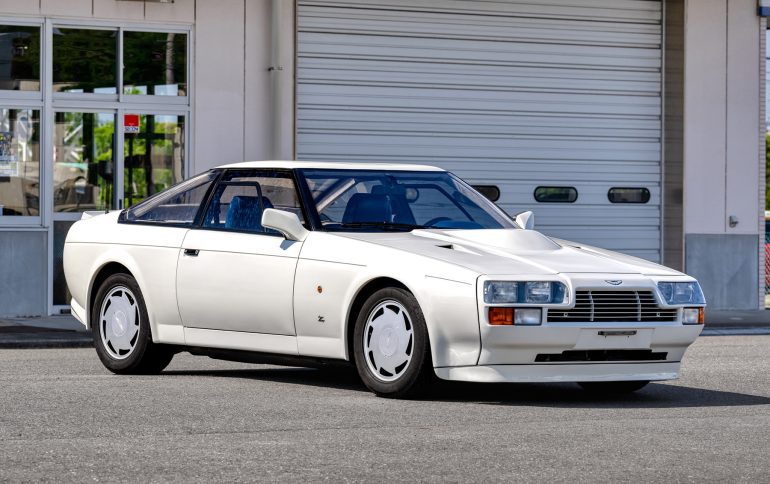
0 - 60: 4.8 seconds / Quarter Mile: N/A seconds
Summary
The 1986 Aston Martin V8 Vantage Zagato was a captivating blend of British elegance and Italian flair, resulting in a limited-edition grand tourer that exuded both luxury and performance. Its striking, angular design, crafted by the renowned Italian coachbuilder Zagato, was a departure from Aston Martin's traditional styling, giving it a unique and aggressive presence.
Underneath its sculpted bodywork, the V8 Vantage Zagato housed a 5.3-liter V8 engine, a powerhouse that produced 432 horsepower and 395 lb-ft of torque. This impressive output, coupled with a five-speed manual transmission, propelled the car from 0 to 60 mph in a brisk 4.8 seconds, a remarkable feat for its time. Its top speed of 186 mph further solidified its position as a true performance machine.
The Vantage Zagato's performance wasn't just about straight-line speed. It also boasted a sport-tuned suspension and responsive steering, providing agile handling and a rewarding driving experience. The car felt planted and confident in corners, inspiring driver confidence and encouraging spirited driving. Its lightweight construction, thanks to the extensive use of aluminum body panels, further enhanced its agility and responsiveness.
While the Vantage Zagato's performance was undoubtedly impressive, it was its unique blend of British luxury and Italian design that truly set it apart. Its handcrafted interior, featuring supple leather upholstery, polished wood trim, and bespoke details, created a luxurious and refined environment. The Vantage Zagato was a limited-production model, with only 52 coupes ever built, making it a rare and highly sought-after collector's car today.
5. 1988 Lamborghini Countach 25th Anniversario

0 - 60: 4.8 seconds / Quarter Mile: 13.2 seconds
Summary
The 1988 Lamborghini Countach 25th Anniversario was a special edition created to celebrate the iconic model's 25th year in production. While it may be the last iteration of the original Countach, it's far from the least impressive. This late-production model combined the classic wedge-shaped design with aerodynamic enhancements and a refined interior, making it a desirable collector's item and a formidable performer.
Under the hood, the 25th Anniversario retained the 5.2-liter V12 engine found in the 5000 QV model. While the official power output was stated as 455 horsepower and 369 lb-ft of torque, real-world figures often varied. Nevertheless, this powerful engine, coupled with a five-speed manual transmission, could propel the Anniversario from 0 to 60 mph in around 4.8 seconds, with a top speed of 183 mph. These figures were impressive for its time, and the car's exhilarating acceleration and signature V12 sound were truly intoxicating.
The 25th Anniversario's performance wasn't just about raw power. It also featured a revised suspension setup, improved aerodynamics, and wider tires, all of which contributed to its improved handling and stability compared to its predecessors. While still a challenging car to drive at the limit, the Anniversario offered a more refined and predictable experience, making it a more accessible supercar for those who craved both performance and everyday usability.
6. 1984 Ferrari 288 GTO
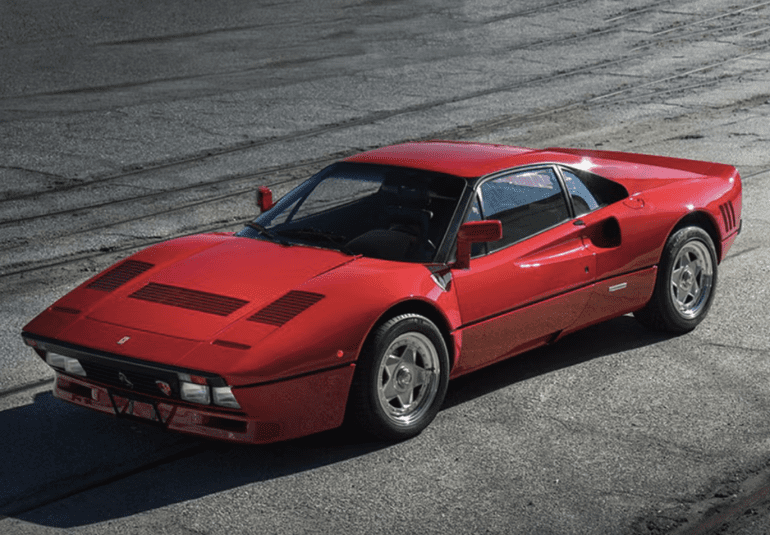
0 - 60: 4.9 seconds / Quarter Mile: 13.9 seconds
Summary
The 1984 Ferrari 288 GTO is a legendary supercar that marked a turning point in Ferrari's history. As a homologation special built to meet Group B racing regulations, it was a limited-production model that showcased Ferrari's engineering prowess and commitment to performance. Its iconic design, with its wide body, flared fenders, and distinctive NACA ducts, has become synonymous with Ferrari's golden era of supercars.
Underneath its Pininfarina-designed bodywork, the 288 GTO housed a twin-turbocharged 2.8-liter V8 engine, a technological marvel that produced 400 horsepower and 366 lb-ft of torque. This powerful engine, paired with a five-speed manual transmission, propelled the car from 0 to 60 mph in just 4.9 seconds and on to a top speed of 189 mph, making it one of the fastest production cars of its time.
The 288 GTO's performance wasn't just about straight-line speed. It also boasted a lightweight tubular chassis, a race-derived suspension system, and four-wheel disc brakes, all of which contributed to its exceptional handling and agility. The car's balanced weight distribution and responsive steering made it a joy to drive on both the road and the track.
The 1984 Ferrari 288 GTO is more than just a performance car; it's a collector's dream and a symbol of Ferrari's rich racing heritage. Its limited production run, iconic design, and groundbreaking performance make it a true masterpiece of automotive engineering.
7. 1986 Ferrari Testarossa
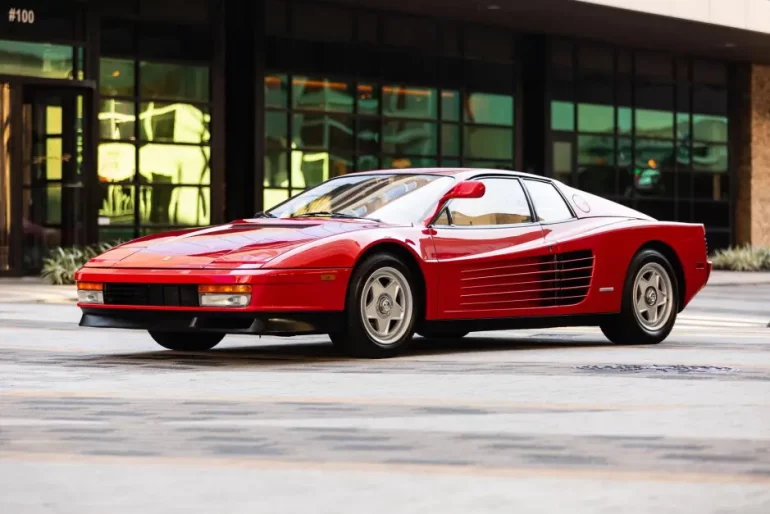
0 - 60: 5.0 seconds / Quarter Mile: 13.2 seconds
Summary
The 1986 Ferrari Testarossa is an iconic 80s supercar, famed for its distinctive side strakes and wedge-shaped design. However, its performance is just as noteworthy as its head-turning looks.
Underneath its Pininfarina-designed bodywork, the Testarossa houses a 4.9-liter flat-12 engine, a marvel of engineering that produced 390 horsepower (287 kW) at 6,300 rpm and 361 lb⋅ft (490 N⋅m) of torque at 4,500 rpm. This powerplant, paired with a 5-speed manual transmission, propelled the Testarossa from 0 to 62 mph in 5.0 seconds and on to a top speed of 180 mph. It was a true performer in its era, offering a thrilling driving experience with its powerful acceleration and high top speed.
The Testarossa's performance wasn't just about raw power, though. Its mid-engine layout and well-tuned suspension gave it impressive handling characteristics, allowing it to navigate corners with confidence. However, its wide body and heavy steering could make it a bit challenging to maneuver in tight spaces.
The Testarossa wasn't just a performance machine; it was also a luxurious grand tourer. Its spacious interior, comfortable seating, and high-quality materials provided a refined and enjoyable driving experience. The combination of performance, luxury, and iconic design made the Testarossa a sought-after collector's item and a symbol of the excess and glamour of the 1980s.
8. 1982 Ferrari 512 Berlinetta Boxer
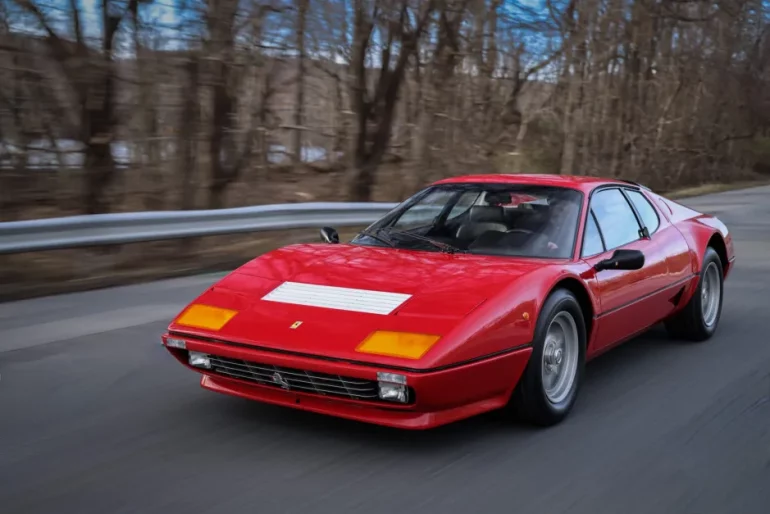
0 - 60: 5.0 seconds / Quarter Mile: 13.3 seconds
Summary
The 1982 Ferrari 512 Berlinetta Boxer (BB), a mid-engined marvel, represented a pivotal moment in Ferrari's history. This model was a refined iteration of the BB series, showcasing Ferrari's commitment to both performance and luxury.
Under its iconic Pininfarina-designed bodywork, the 512 BB packed a powerful 4.9-liter flat-12 engine. In 1982, this engine came in two distinct versions: the BB 512 with carburetors and the BB 512i with fuel injection. The carbureted version produced 340 horsepower, while the injected variant bumped the output to 360 horsepower. Paired with a five-speed manual transmission, the 512 BB could rocket from 0 to 60 mph in the 5-seconds, with a top speed of around 175 mph.
The 512 BB's performance wasn't just about straight-line speed. Its mid-engine layout and well-tuned suspension provided exceptional handling and agility, making it a joy to drive on winding roads. The car's wide track and sticky tires ensured ample grip, while its powerful brakes provided confident stopping power. The luxurious interior featured leather upholstery, air conditioning, and power windows, providing a comfortable and refined driving experience.
The 1982 Ferrari 512 BB was more than just a performance machine; it was a symbol of luxury and exclusivity. It represented a harmonious blend of power, handling, and comfort, making it a coveted collector's item and a testament to Ferrari's enduring legacy in the automotive world.
9. 1989 Pontiac Firebird Trans Am 20th Anniversary
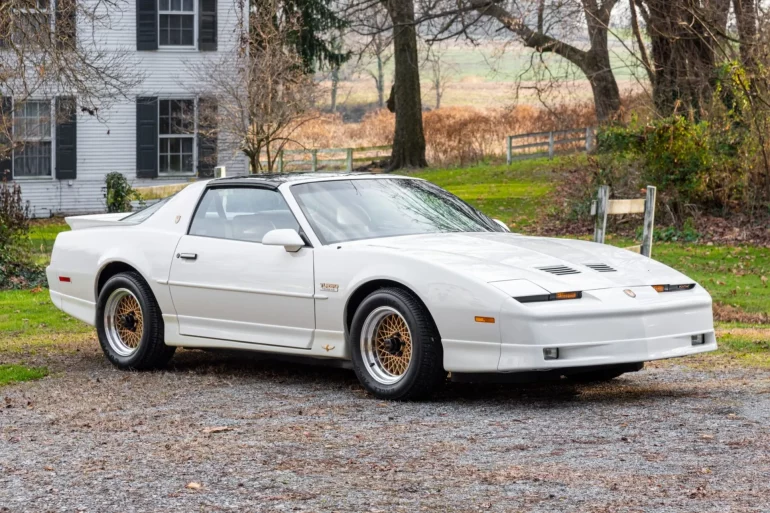
0 - 60: 5.0 seconds / Quarter Mile: 14.0 seconds
Summary
The 1989 Pontiac Firebird Trans Am 20th Anniversary Edition was a special model designed to celebrate two decades of the iconic "Smokey and the Bandit" car. While it maintained the aggressive and sleek styling that the Trans Am was known for, it stood out with its unique white paint job, gold accents, and special "20th Anniversary" badging.
However, what truly set this model apart was its performance. Under the hood, it featured a turbocharged 3.8-liter V6 engine borrowed from the Buick Grand National. This engine, officially rated at 250 horsepower and 340 lb-ft of torque, was known to be underrated, with some estimating its actual output closer to 300 horsepower. This power, combined with a four-speed automatic transmission, allowed the 20th Anniversary Trans Am to sprint from 0 to 60 mph in a blistering 5.0 seconds, according to Car and Driver testing, making it the fastest production car in the US at the time.
The 20th Anniversary Trans Am also boasted enhanced braking capabilities with larger 11.9-inch front rotors and twin-piston calipers, providing improved stopping power to match its impressive acceleration. While the turbocharged V6 engine and improved brakes were the main performance upgrades, the car also received a few subtle cosmetic enhancements, including embroidered headrests and unique floor mats. The 1989 Pontiac Firebird Trans Am 20th Anniversary Edition is a rare and collectible muscle car that represents a unique chapter in the Trans Am's history. Its combination of classic styling, turbocharged power, and limited production run makes it a desirable car for enthusiasts and collectors alike.
10. 1987 Mercedes-Benz 300E AMG Hammer

0 - 60: 5.1 seconds / Quarter Mile: 13.5 seconds
Summary
The 1987 Mercedes-Benz 300E AMG Hammer was a groundbreaking performance sedan that challenged the conventional notions of what a luxury car could achieve. Disguised in the understated body of a Mercedes-Benz W124, the Hammer packed a monstrous punch under the hood that could rival exotic sports cars of its era.
The heart of the Hammer was a 5.6-liter V8 engine borrowed from the 560 SEC, but AMG, Mercedes' performance tuning arm, didn't stop there. They massaged the engine to produce a staggering 385 horsepower and 384 lb-ft of torque. This power, channeled through a four-speed automatic transmission, propelled the Hammer from 0 to 60 mph in just 5.1 seconds, an astonishing feat for a family sedan. Its top speed of 188 mph further cemented its status as a wolf in sheep's clothing.
The Hammer's performance wasn't just about straight-line speed. AMG also upgraded the suspension, brakes, and wheels to handle the increased power, resulting in a car that was surprisingly agile and responsive for its size. Its wide body kit, flared fenders, and 17-inch wheels further enhanced its aggressive appearance.
The 1987 Mercedes-Benz 300E AMG Hammer was a game-changer, a car that proved that luxury and performance could coexist in perfect harmony. It was a rare and exclusive machine, with only a limited number produced, and it remains a highly sought-after collector's car today. Its legacy lives on as a testament to AMG's engineering prowess and its ability to create truly extraordinary performance machines.
11. 1989 Porsche 928 GT
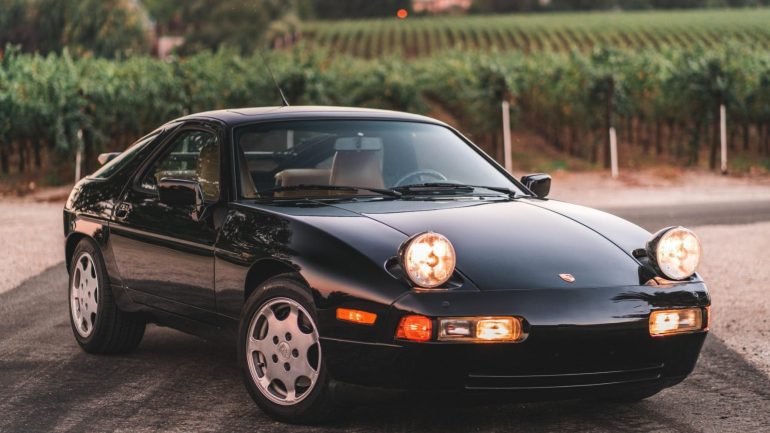
0 - 60: 5.1 seconds / Quarter Mile: N/A seconds
Summary
The 1989 Porsche 928 GT was a driver-focused evolution of the 928 grand tourer, designed to deliver a more engaging and sporty experience. It represented a shift in focus for the model, emphasizing performance and handling over outright luxury.
Under the hood, the 928 GT featured a 5.0-liter V8 engine that produced 330 horsepower, a significant increase over the standard 928 S4's 316 horsepower. This power was delivered through a five-speed manual transaxle, the only transmission option available for the GT model. The 928 GT could accelerate from 0 to 60 mph in 5.1 seconds, a respectable figure for its time, and reach a top speed of 171 mph.
To complement the increased power, the 928 GT received a number of performance enhancements, including a sport-tuned suspension, a limited-slip differential, and unique 16-inch "Club Sport" wheels. These upgrades sharpened the car's handling, making it more responsive and agile on the road and track. Its interior was also stripped down compared to the S4, removing some luxury features to save weight and further emphasize its sporting intentions.
The 1989 Porsche 928 GT was a unique offering in the grand tourer segment, catering to drivers who desired a blend of performance, luxury, and practicality. While it may not have been as hardcore as some of Porsche's other models, it offered a rewarding driving experience that balanced comfort with exhilarating performance.
12. 1986 Aston Martin V8 Vantage Volante
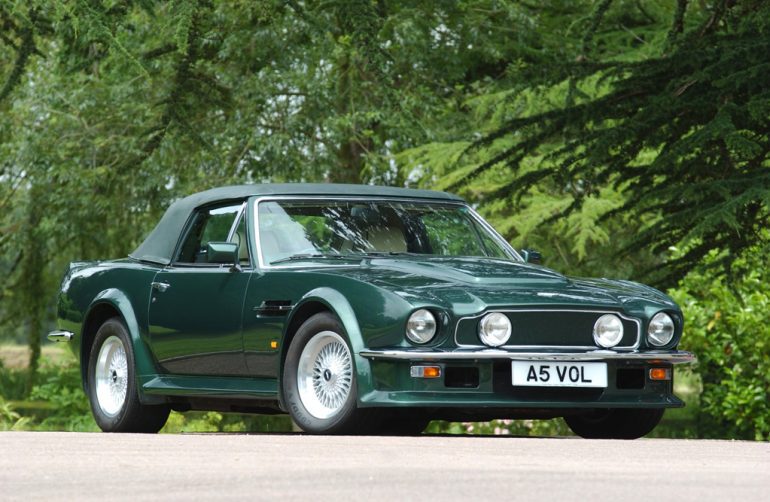
0 - 60: 5.2 seconds / Quarter Mile: N/A seconds
Summary
The 1986 Aston Martin V8 Vantage Volante was a captivating blend of power and luxury, a convertible grand tourer that exuded both elegance and ferocity. Its sleek lines and aggressive stance hinted at its performance potential, while its plush interior and open-air experience catered to those seeking a luxurious and thrilling driving experience.
Underneath its sculpted hood, the V8 Vantage Volante housed a 5.3-liter V8 engine, a potent powerplant that produced 432 horsepower. This impressive output, coupled with a five-speed manual transmission, propelled the car from 0 to 60 mph in a brisk 5.2 seconds, making it one of the fastest convertibles of its time. Its top speed of 170 mph further solidified its position as a true performance machine.
The Vantage Volante's performance wasn't just about straight-line speed. Its sport-tuned suspension and responsive steering provided agile handling and a rewarding driving experience. The car felt planted and confident in corners, inspiring driver confidence and encouraging spirited driving. Its convertible top, which could be lowered in just a few seconds, allowed occupants to fully embrace the open-air experience, adding another layer of excitement to the already thrilling ride.
While the Vantage Volante's performance was certainly impressive, it was its blend of luxury and performance that truly set it apart. Its handcrafted interior, featuring supple leather upholstery, polished wood trim, and state-of-the-art technology, provided a comfortable and refined environment for both driver and passenger. The Vantage Volante was a car that could effortlessly transition from a grand tourer to a sports car, offering a unique and unforgettable driving experience.
13. 1985 Lamborghini Countach LP5000 QV
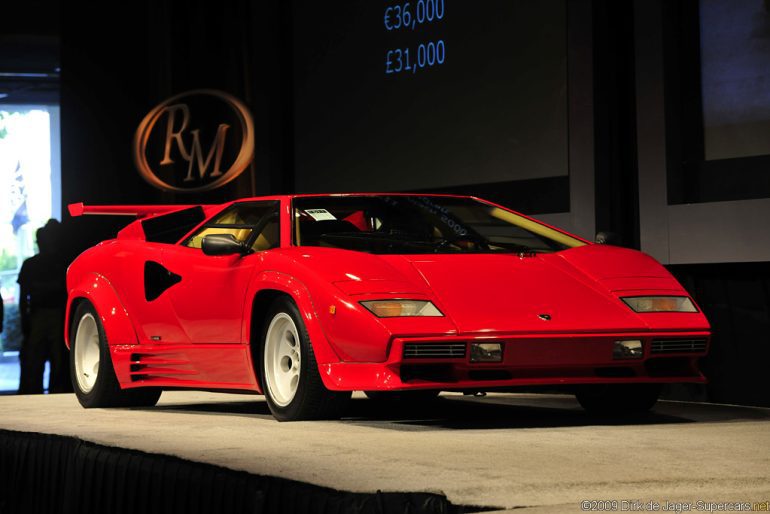
0 - 60: 5.2 seconds / Quarter Mile: 13.7 seconds
Summary
The 1985 Lamborghini Countach LP5000 QV (Quattrovalvole) was a true testament to Lamborghini's dedication to pushing the boundaries of performance and engineering. As an evolution of the iconic Countach, the QV model brought significant upgrades that further enhanced the car's capabilities and solidified its status as a legendary supercar.
Under its wedge-shaped bodywork, a masterpiece designed by Marcello Gandini, the LP5000 QV housed a 5.2-liter V12 engine with four valves per cylinder, hence the name Quattrovalvole. This powerful engine produced 455 horsepower and 369 lb-ft of torque, propelling the car from 0 to 60 mph in around 5.2 seconds. Its top speed, depending on the model and configuration, ranged from 183 to 186 mph, making it one of the fastest production cars of its era.
The LP5000 QV's performance wasn't just about raw power. Its revised suspension, wider tires, and improved aerodynamics (with the optional rear wing) made it a more capable and stable car than its predecessors. The QV's handling was still challenging, requiring a skilled hand to tame it, but it offered a more planted and predictable experience, making it a more accessible supercar for those who craved both performance and driving thrills.
Inside, the LP5000 QV retained the luxurious and futuristic interior of the Countach, with its angular design and high-quality materials. The QV model introduced some minor updates, such as a new steering wheel and revised gauges, but the overall experience remained true to the Countach's iconic design language. The 1985 Lamborghini Countach LP5000 QV remains a highly sought-after collector's car, a symbol of Lamborghini's com
14. 1981 BMW M1
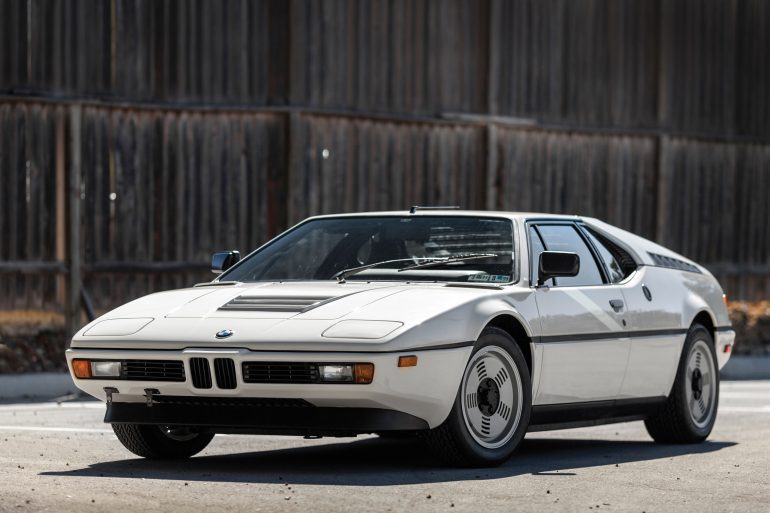
0 - 60: 5.4 seconds / Quarter Mile: 13.7 seconds
Summary
The 1981 BMW M1 is a legendary sports car that holds a unique place in BMW's history. As the brand's first mid-engine production car and the inaugural model from BMW's Motorsport division, the M1 was designed to be a thoroughbred performance machine. Its striking wedge-shaped design, penned by Giorgetto Giugiaro, was not only visually stunning but also aerodynamically efficient, a testament to the car's racing pedigree.
Underneath its sleek fiberglass bodywork, the M1 housed a 3.5-liter M88 straight-six engine, a high-revving powerhouse that produced 277 horsepower and 243 lb-ft of torque. This engine, paired with a ZF five-speed manual transmission, propelled the M1 from 0 to 62 mph in 5.4 seconds and on to a top speed of 162 mph. Its performance figures were impressive for its time, putting it in direct competition with some of the world's most renowned sports cars.
The M1's performance wasn't just about straight-line speed. Its mid-engine layout, independent suspension, and four-wheel disc brakes provided exceptional handling and agility, making it a joy to drive on both the road and the track. The car's balanced chassis and responsive steering offered a direct and engaging driving experience that was praised by enthusiasts and critics alike.
While the M1's production run was relatively short-lived, with only 453 examples produced between 1978 and 1981, it solidified BMW's commitment to high-performance cars and laid the groundwork for the iconic M cars that followed. The M1 remains a highly sought-after collector's item and a symbol of BMW's engineering prowess and racing heritage.
15. 1988 Lotus Esprit Turbo
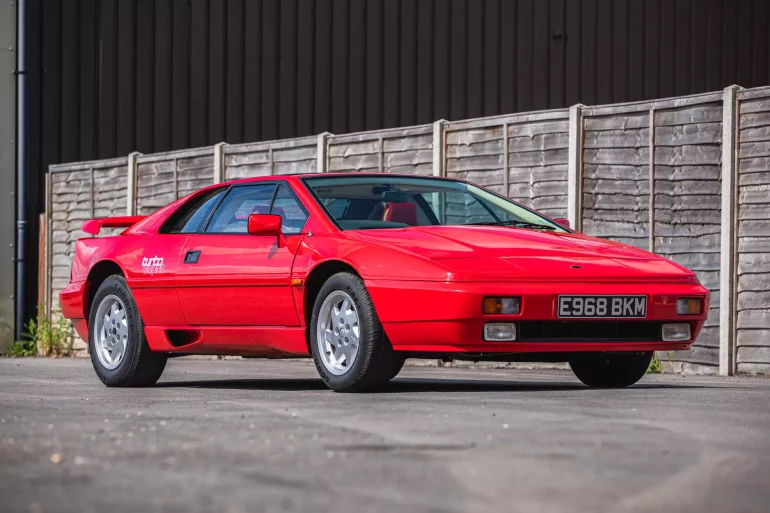
0 - 60: 5.4 seconds / Quarter Mile: 13.8 seconds
Summary
The 1988 Lotus Esprit Turbo marked a significant evolution in the model's history, bringing with it a sleeker, more aerodynamic design and enhanced performance capabilities. It was a car that turned heads with its aggressive styling while delivering a thrilling driving experience that lived up to Lotus's reputation for lightweight, agile sports cars.
Under the hood, the Esprit Turbo housed a Type 910 2.2-liter inline-four engine with a single Garrett AiResearch T3 turbocharger. This powerful engine produced 215 horsepower and 220 lb-ft of torque, enabling the Esprit Turbo to accelerate from 0 to 60 mph in around 5.4 seconds and reach a top speed of 152 mph, making it the first roadgoing Lotus to surpass the 150 mph mark.
The Esprit Turbo's performance was further enhanced by its improved aerodynamics, with a drag coefficient of 0.33, compared to the previous model's 0.40. This allowed for greater high-speed stability and a more planted feel on the road. The car's lightweight fiberglass body and backbone chassis also contributed to its nimble handling and overall performance. Inside, the Esprit Turbo offered a driver-focused cockpit with supportive sports seats and a simple yet functional dashboard.
The 1988 Lotus Esprit Turbo remains a sought-after classic car, cherished by enthusiasts for its unique blend of performance, style, and rarity. It represents a pivotal moment in Lotus's history, as it showcased the brand's commitment to innovation and its ability to create world-class sports cars that could compete with the best in the world.
16. 1980 De Tomaso Pantera GT5
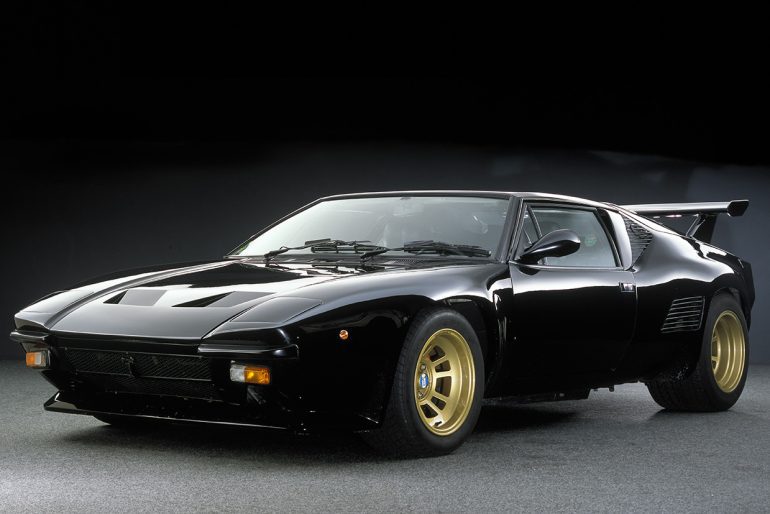
0 - 60: 5.4 seconds / Quarter Mile: 13.8 seconds
Summary
The 1980 De Tomaso Pantera GT5 emerged as a bold and aggressive evolution of the iconic Italian-American supercar. Its design was a dramatic departure from the earlier Panteras, featuring a widebody kit with pronounced fender flares, a large rear wing, and a deep front air dam. This not only gave it a menacing presence but also improved its aerodynamic performance.
Under the hood, the GT5 retained the Ford Cleveland 351 cubic inch (5.8-liter) V8 engine, a proven powerhouse that, depending on the market, produced between 330 and 350 horsepower. Mated to a ZF five-speed manual transmission, this power propelled the GT5 from 0 to 60 mph in roughly 5.4 seconds, with a top speed of around 160 mph. The GT5's acceleration was fierce, accompanied by a thunderous roar from its quad exhaust pipes.
The GT5's performance wasn't just about straight-line speed. The widebody kit allowed for wider tires, which, combined with a revised suspension setup, improved its handling and grip. The car felt more planted and stable through corners, making it a more capable track machine than its predecessors. However, the GT5's heavy clutch and somewhat vague steering could make it a handful to drive at the limit. Despite its quirks, the 1980 De Tomaso Pantera GT5 remains a sought-after classic, valued for its unique blend of Italian styling and American muscle, and its place in the history of exotic supercars.


